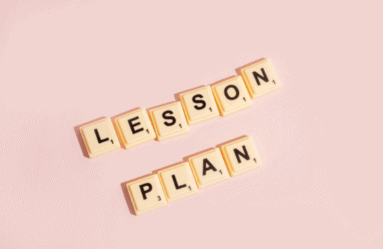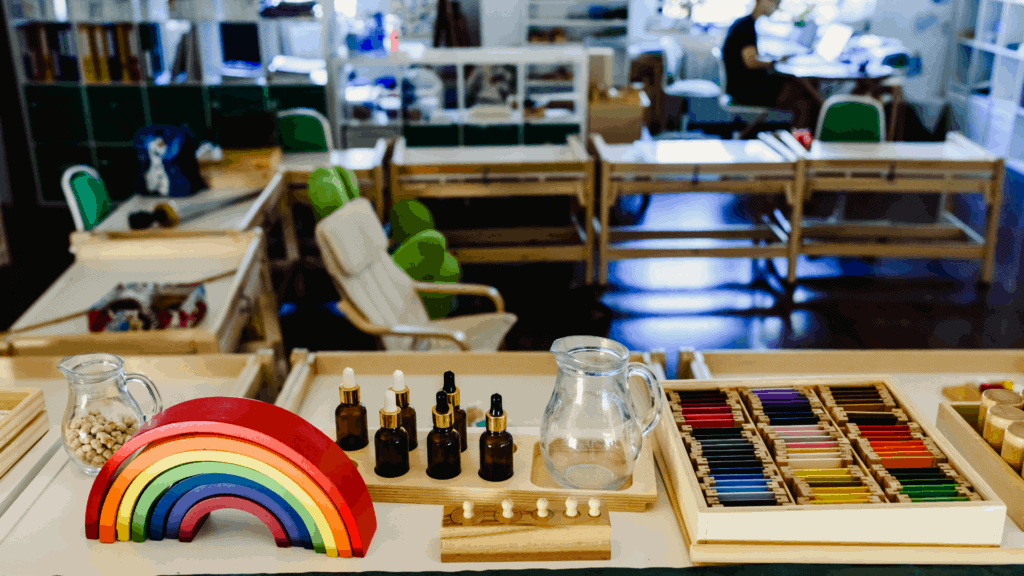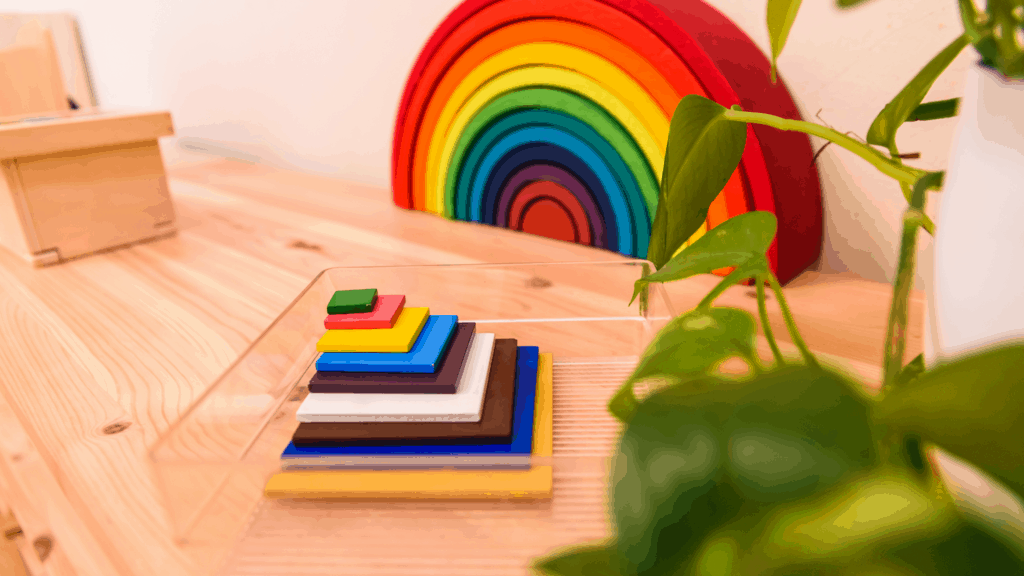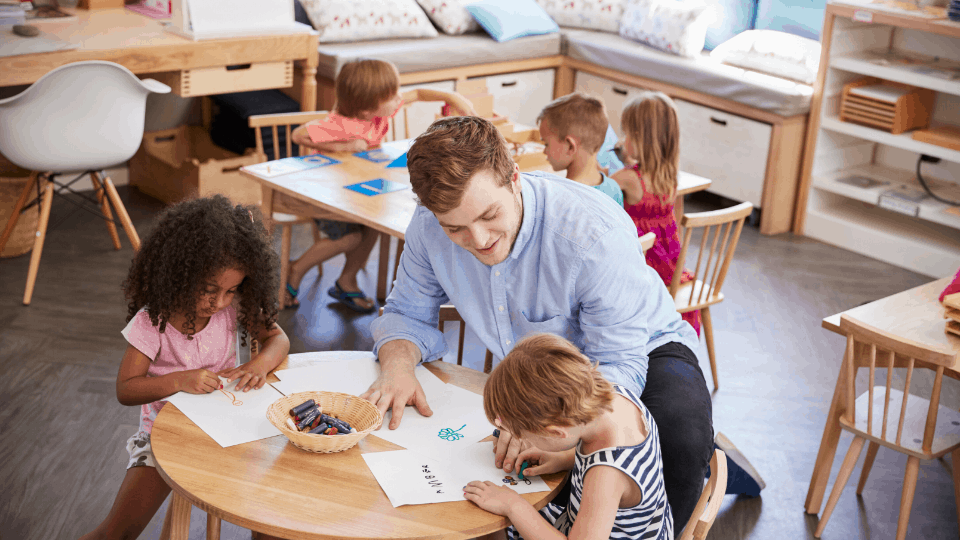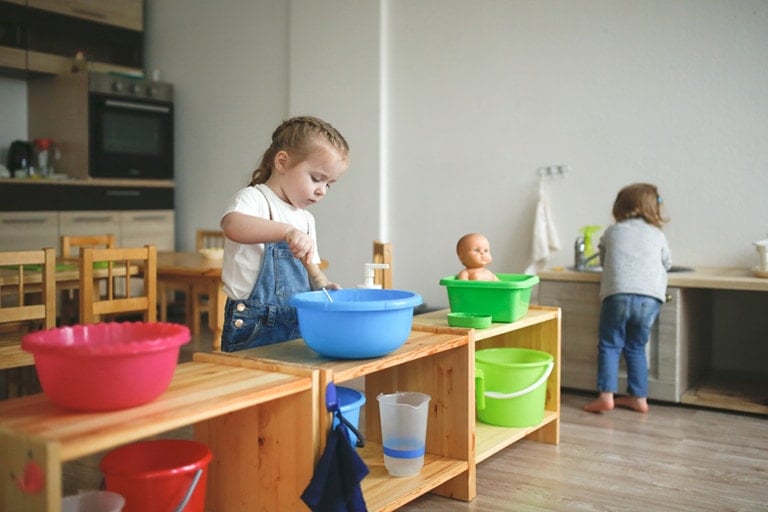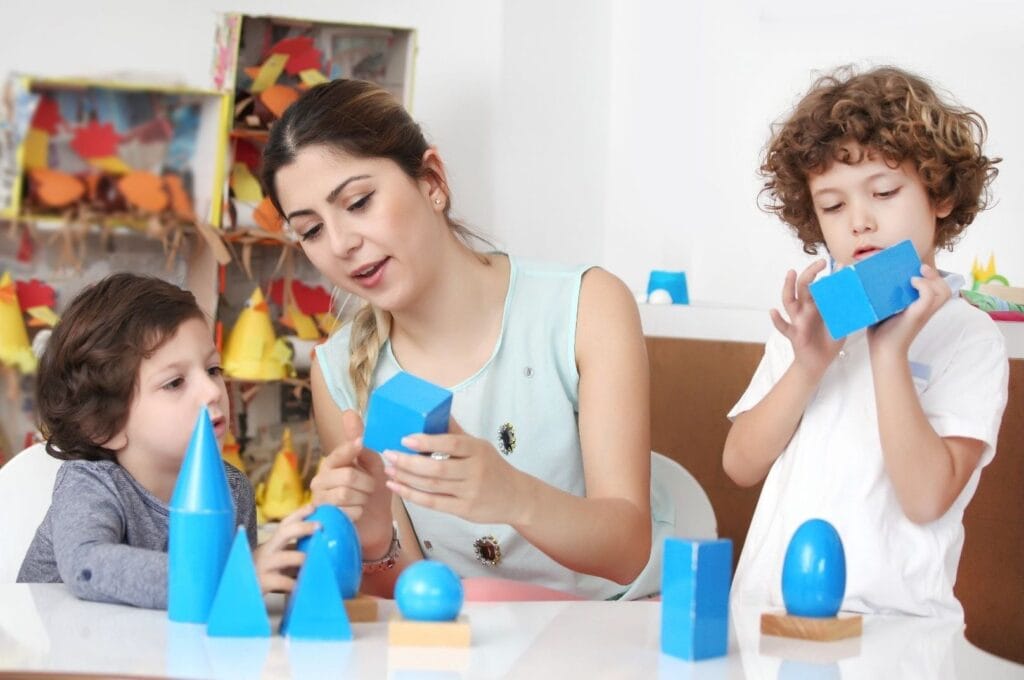The
Teaching Practical Life in
Practical Life activities intend to help a child understand the world they live in. They see you preparing a meal, brushing your hair, or cleaning your environment and are naturally really curious and want to join in! Here, we will cover how to teach Practical Life by looking at what makes up a Practical Life activity.
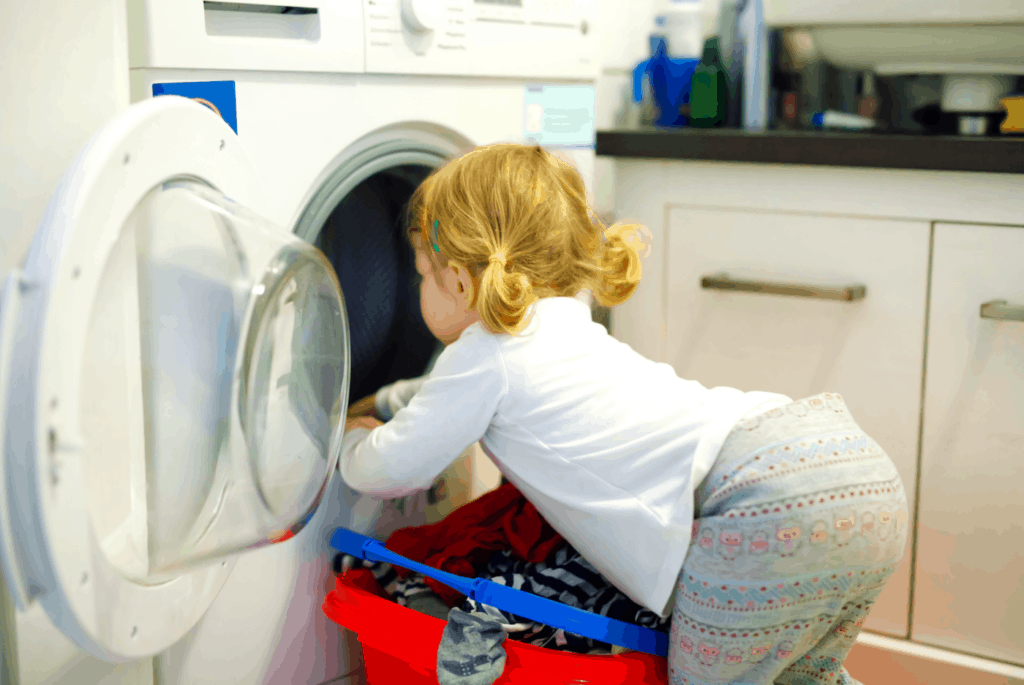
How to Teach Practical Life
Practical Life activities encourage children to problem solve and develop fine and gross motor skills. These activities help children understand the world they live in, by making them active participants. Practical Life activities channel a child’s natural curiosity for the daily routines that shape their lives.
Practical Life activities fall into one of four categories. These categories are care of the self, care of the environment, grace and courtesy, and control of movement.
So, how do you teach Practical Life? Practical Life can be taught by showing and doing. Children observe their surroundings and watch what adults do. The Practical Life exercises should be designed to mirror this. However, we do not want children to merely copy what they have seen. The
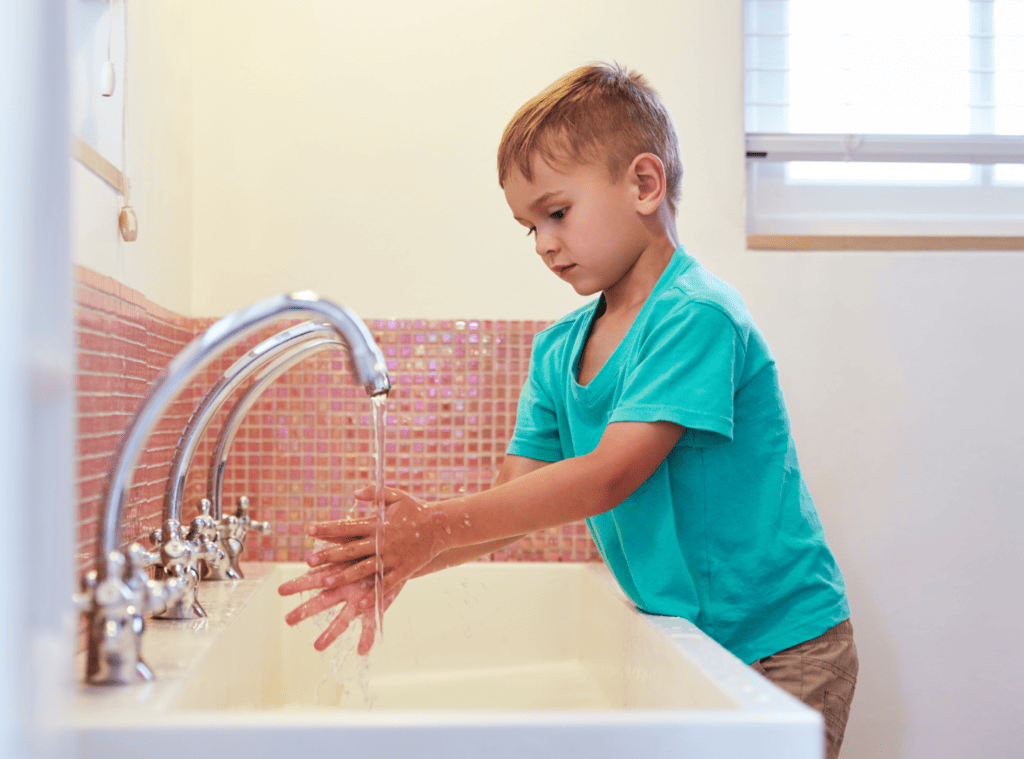
The activities should be set up with varying degrees of difficulty, spanning from left to right. Left would be the easiest and Right the more difficult task. One of the easiest ways to teach Practical Life in a home environment is by allowing children to help with daily tasks.
These tasks can be anything from unloading the dishwasher, sweeping the floors, and helping to prepare a meal. The activities that make up Practical Life are cultural and should be adjusted accordingly.
When/Where does Practical Life Start in Montessori ?
The wonderful thing about Practical Life exercises is that they can be introduced early, even in infancy. There are Practical Life activities for all ages and developmental stages. Practical Life tasks have the advantage of not needing to be completed in a classroom and can be completed at home.
The activities can start off being simple, such as washing hands and putting on pants, and progress to pouring water or preparing part of a meal.
“Our task is to show how the action is done and at the same time destroy the possibility of imitation”
– MariaMontessori
Characteristics of Practical Life Activities
Practical Life activities should be reality-based. All materials used must be real, breakable, and functional. There should also only be one of each activity set up in the space.
When it comes to setting up your shelves, each activity should be in its basket and color-coded wherever possible. Color-coding makes it easier for a child to identify the activity and tidy it up. The materials should also be grouped by function, for example, food items in the food prep area and gardening items in the garden.
Each activity also needs a clear beginning, middle, and end. All of the materials used should be child-size. Natural materials are the best to use because they can be easily cleaned and are less distracting to the eye.
What are Practical Life Materials?
Montessori Practical Life materials are the foundation of learning in a
- Mats & Trays – Practical life activities are stored on trays on the shelf. The tasks are performed on mats which the child will carry and roll out.
- Spoons & Bowls – Spoons and bowls feature in several practical life activities. These should be child-size, functional, and breakable.
- Jugs & Glasses – Used in pouring activities, these should be breakable and child-size.
- Cleaning Equipment – Caring for and cleaning the environment is a big part of Practical Life. Items such as spray bottles, polishing materials, cloths, sponges, mops, and brooms, can be used for cleaning work.
All Practical Life materials are everyday items found in the child’s environment.
What Type of Activities are on the Shelves for Practical Life?
The Practical Life activities on your shelf need to cover the four areas of Practical Life. Activities include sorting, pouring, tweezing, washing, planting, polishing, balancing, and cutting.
Below are some ideas for activities to set up on your Practical Life shelf.
- Pouring Activity – Fill a glass jug (with a handle) with water and provide a cup and a sponge. The child can practice pouring water into the glass and cleaning up spilled water with the sponge.
- Spooning Activity – Place two bowls and a spoon on the tray, and fill one bowl with objects that can easily be transferred using a spoon.
- Tweezing Activity – To do this activity, you will need two bowls, objects to transfer, and tweezers. There are many variations of this activity.
- Open and Close Activity – Set up three containers on the tray. The containers should have a different type of lid. Each should open and close and close differently.
- Polishing Activity – There are many different variations of the polishing activity. You can prepare wood, shoes, silver, or a mirror to be polished. To set up a wood polishing activity, you will need a wooden object to be polished, a stack of polishing cloths, wood polish, and a container for the wood polish.
Other basic practical life activities include:
- Handwashing
- Wiping a table
- Greeting someone
- Sweeping
- Walking on the line
Every practical life activity intends to simulate an action performed in everyday life. The activities encourage children to problem solve and develop fine and gross motor skills. They help children understand the world they live in, by making them active participants in it.
Sources:
https://www.montessorialbum.com/montessori/index.php/Wood_Polishing
https://www.guidepostmontessori.com/blog/practical-life-activities-montessori-method
https://www.montessoriservices.com/practical-life/polishing


